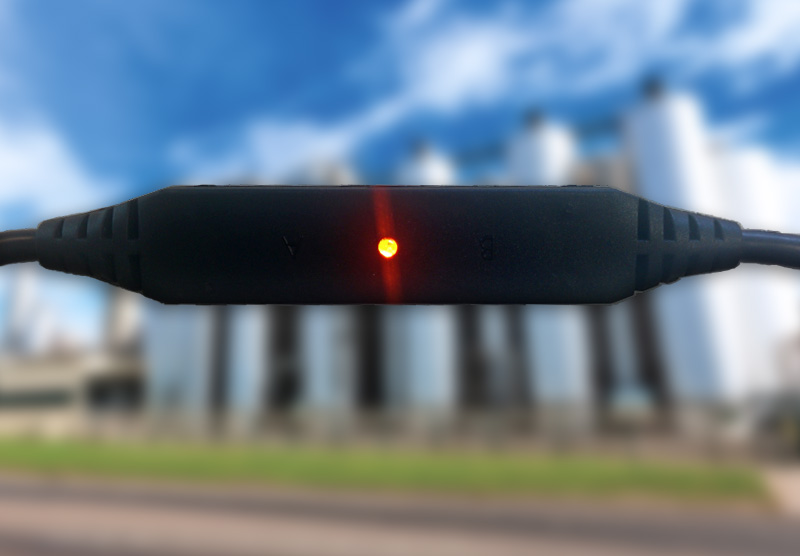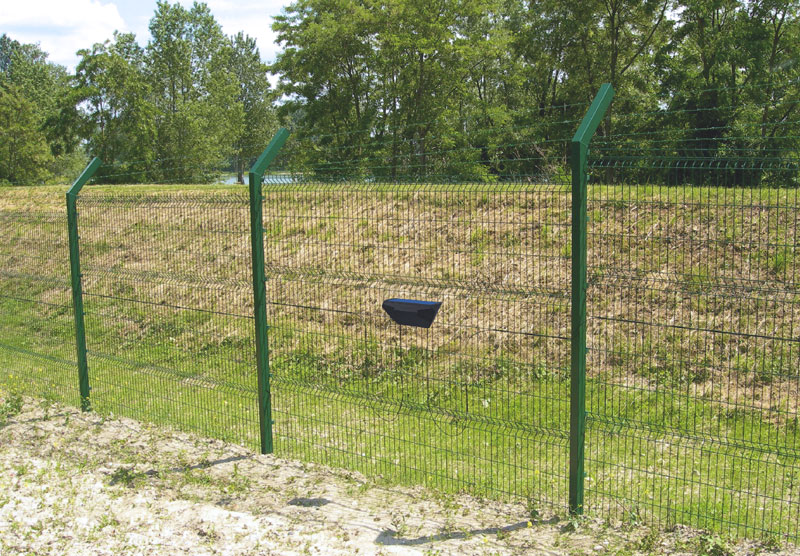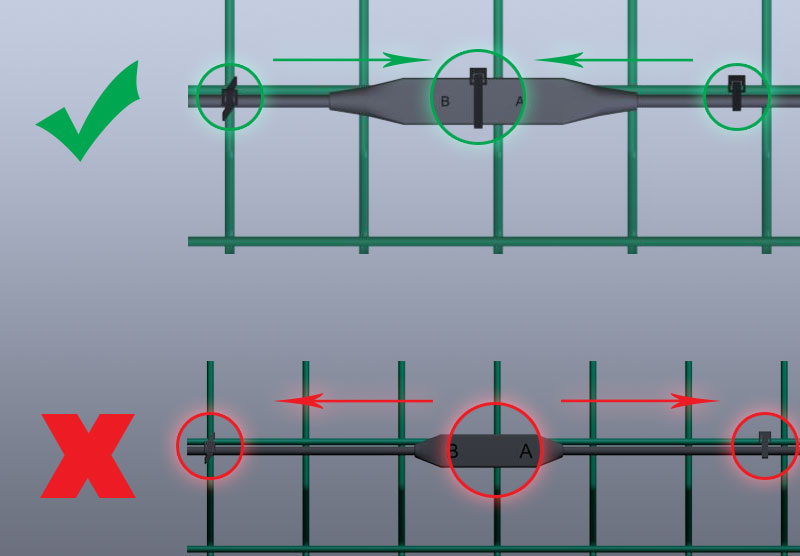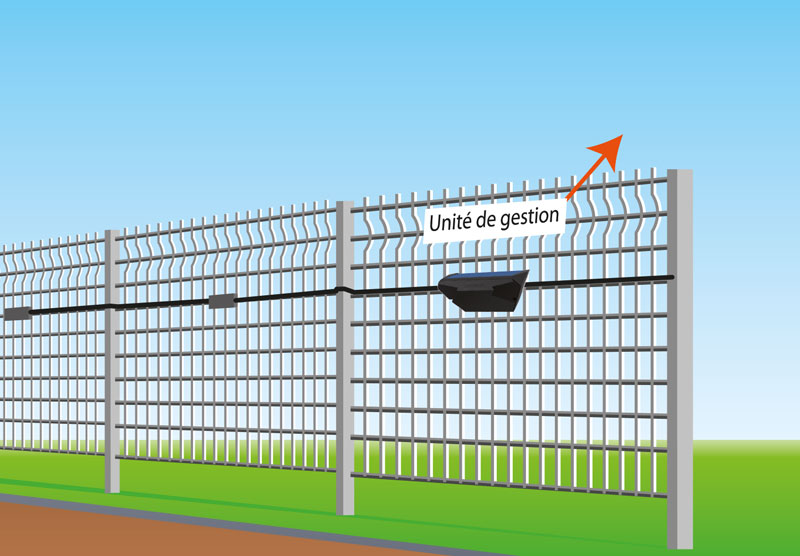Solar-powered Fence-mounted Intrusion Detection
EASY INSTALLATION : Standalone solution, minimal civil engineering, virtually infrastructure-free
RELIABILITY : Distributed intelligence – each sensor has its own signal processing so if one sensor fails, the rest of system continues to work; event filtering eliminates environmental alarms caused by wind, rain and allows for more reliable alarm information; redundancy of alarm information (open loop)
ACCURACY : Zoning feature (up to 4×128 zones) gives precise location capability of cuts, climbs, lifts of fence for verification
EFFICIENCY : Reduced time for installation and maintenance – sensing is in accelerometer, not the cable; detection zones easily set-up
Overview
G-FENCE is a fence-mounted intrusion detection system for perimeter fences. The fence detection cable uses accelerometers to detect fence vibrations generated by intrusion attempts made by cutting, climbing or lifting the fence. Upon an intrusion, the system transmits alarm information via the MAXIBUS 3000 Hub for verification in the control room.
Each G-FENCE system/loop can secure up to 2 miles (3200m) of a perimeter with pinpoint intrusion location to within 10 feet (3m). You can connect up to 4 loops (8 miles) to PROTECH’s Maxibus and running (4) RS485 lines on the perimeter.
The control unit is solar powered with batteries resulting in minimal infrastructure at the site. Unique to the market, G-FENCE guarantees a 1 second alarm response time.
Set-up, maintenance and detection sensitivity adjustments are easily facilitated. A mapping software application allows the system to locate by zone by superimposing it over a site plan or picture.
G-FENCE is compatible with leading Video Management Systems such as Milestone and Genetec.
G-Fence from Protech surpasses its competitors in environmental conditions. Watch how it performs in this wind simulation exercise.
G-FENCE is ideal for securing long perimeters (2 miles/3200m per system x 4) at sites where there is no access to an electrical power supply at the perimeter fence.
Compatible with all “mesh” fences, the detection cable and its equipment are easy to install and maintain and can be easily replaced if the cable is cut during an event. This is because sensing occurs in the accelerometer, not the cable itself.
Thanks to the system’s autonomy, civil engineering is minimal. G-Fence can be used on any sensitive site configurations such as: utilities and sub-stations, oil refineries, nuclear power plants, airports, corrections, etc.
| Power supply | Solar panel and battery in each control unit (CU) |
| Alarm information | CU : Tamper Power supply failure AUX.1 input contact AUX.2 input contact 1 intrusion per zone Perimeter default |
| Alarms provided | Per UG : Tamper, Low Battery, Auxiliary input 1, Auxiliary input 2 Per zone : Intrusion alarm Per G-fence loop : Cable fault |
| Operating Temperature | -40°F to +158°F (-40°C to +70°C) |
| System characteristics | 40 sensors per cable / 2 miles (3200 m) of detection per system / 16 Control Units per system |
| Protection rating | IP55 Management Unit / Termination Unit / IP55 Connection |
It is important to install the detection cable in the middle of the fence with the supplied cable clamps, and to affix the sensor by tightening one of the cable clamps on the fence mesh joint.
To optimize sensor detection, it must be placed in the middle of the fence panel.
To avoid covering the solar panel, do not install the Control Unit (CU) in front of a hedge or in a shaded area. The CU can be accessed remotely if necessary.
Entrances and Gates: use at least a 0.6mm² (.02”) standard cross-section cable with a maximum length of 150 feet (50 m) per detector cable.
To secure a fence and detect any intrusion attempt, a detector cable is installed on the fence. During an intrusion, the sensors will detect vibrations on the fence and send information to the Control Units, which in turn analyzes the information received before triggering an alarm, or not.
The cable is pre-assembled with -easy-to-install sensors helping to reduce installation costs.





